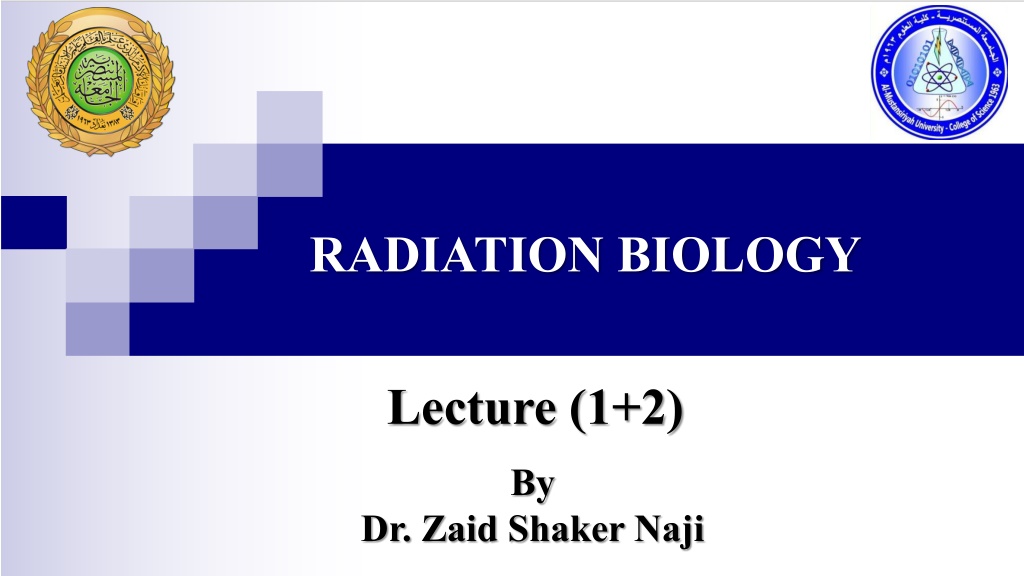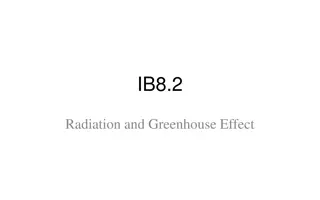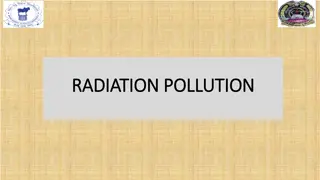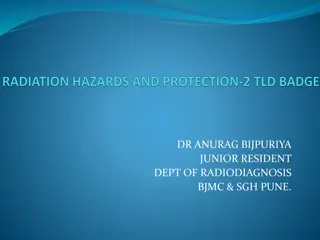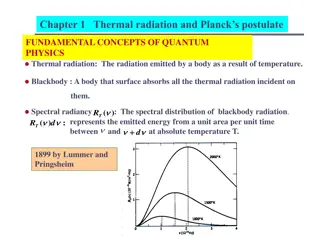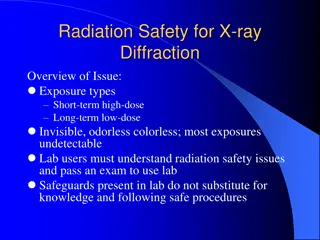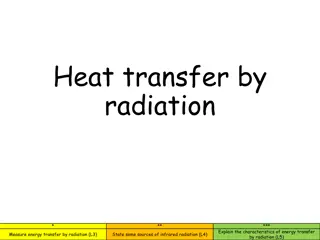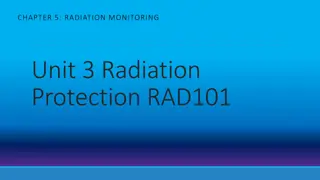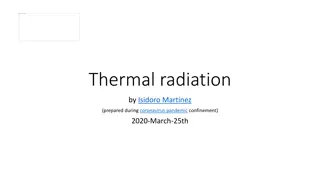A Journey Through Radiation Biology: Discoveries and Milestones
Explore the historical milestones in radiation biology, from the discovery of radiation by energetic particles to key figures like Herschel, Röntgen, Curie, and more. Learn about the impact of radiation on living organisms, genetic effects, and famous experiments that shaped our understanding of this field.
Download Presentation

Please find below an Image/Link to download the presentation.
The content on the website is provided AS IS for your information and personal use only. It may not be sold, licensed, or shared on other websites without obtaining consent from the author. Download presentation by click this link. If you encounter any issues during the download, it is possible that the publisher has removed the file from their server.
E N D
Presentation Transcript
RADIATION BIOLOGY Lecture (1+2) By Dr. Zaid Shaker Naji
Definitions Radiation is a process in which energetic particles or energetic waves travel through vacuum or media. Radiobiology (also known as radiation biology) is the study of the action of ionizing radiation on living things.
History Sir Frederick William Herschel (German, 1738-1822) discovered planet Uranus & its major moons (Titania and Oberon). He was the first personwhodiscoversinfraredradiation. Johann Wilhelm Ultraviolet. Ritter (Germany, 1776 1810) discovered Heinrich Hertz (German 1857 1894) detected Radio waves therefore, some prefer to call Hertz the Father of Radio and the unit ofradiofrequencyiscalledthe hertz .
Wilhelm Conrad Rontgen (German, 1845 1923) discovered X-rays. In 1901 he was awarded the first Nobel Prize in Physics. He published the first X-ray photograph of his wife's hand, also he subjected his fingers to X-rays and observed the acuteeffectsofradiation(hisfingersburned). Antoine Henri Becquerel (France, 1852- 1908) discovered that uranium salts emitted rays that resembled X-rays in their ability to penetrate solid objects. Henri Becquerel, Pierre Curie,MarieCuriewontheNobelPrizeinPhysics1903.
Pierre Curie (1859-1906) & Marie Curie (1867-1934) together with Antoine Becquerel won the 1903 Nobel Prize in Physics for their investigations of radioactivity. Marie won a 1911 Nobel Prize in Chemistry for Radium, Polonium. The health dangers of substances were not well known and Marie died ofcancer. discovering radioactive Ernest Rutherford (1871-1937) discovered two distinctive types of radiation emitted by thorium and uranium which he named alpha and beta. Also he named the radiation discovered by Paul Villard, a French chemist as gamma. He found out that this radiation had a much greater penetrationpowerthanalphaand beta.
Victor Hess discovered cosmic rays during balloon flights in 1912. He won the 1936 Nobel prizein physics. James Chadwick (1932) radiation andisotopes. discovered neutron Hermann Joseph Muller (1890-1967) recognized the genetic effects of radiation in 1927 including cancer risk, gene mutations & chromosome changes by X-rays. In 1946, he was awarded the NobelPrizeforhis findings.
The atomic bombings of Hiroshima and Nagasaki, 1945 resulted in a large number of incidents of radiation poisoning, allowing for greater insight into its symptomsanddangers.
Uses ofRadiation A. Inmedicine 1.Detection of broken bones & tumor masses by usingX-rays. 2.Diagnosis of thyroid gland diseases by radioactive substance ( Iodine isotope). 3.Detection of infectious diseases & hormonal disturbance by radioimmunoassay. 4.Decontamination of medical equipment & products by UV & gamma ( )rays. 5.Treatment of cancers (radiotherapy) by using gamma ( ) ray.
Uses ofRadiation B. In communication All modern communication systems use forms of electromagnetic radiation that vary in their intensity according to changes in: 1.Sounds (e.g.phone) 2.Words (e.g. fax) 3. Pictures (e.g. internet) C. In science 1. Determination the composition & age of materials by using radioactive atoms. 2. Determination the pathways taken by pollutants through the environment.
Types of Radiation Electromagnetic radiations can be classified in several types of radiation according to their wave length & frequency. A smaller wavelength corresponds to a higher energy according to theequation: E = h c / (E = Energy; h = Planck's constant; c = speed of light; = wavelength).
A. Non-ionizingRadiation Electromagnetic waves that are not energetic enough to detach electrons from atoms or molecules (3.1 eV), thus can t ionizing them. 1. Visible light (400 700 nm) from sunlight irradiance (1 kilowatt/square meter, only 445 watt is visible light. 2. Infrared (IR) (700 nm - 300 micrometers) From 1 kilowatt of sunlight energy, 527 watts is infrared radiation. 3. Microwave (one meter to as short as one millimeter) 4. Radio waves (thousands meters) naturally resulted from lightning and astronomical objects. artificially to be used for (mobile, broadcasting, radar, satellite, computer networks). 5.Ultraviolet radiations (UV) (400 nm -125 nm) From 1 kilowatt of bright sunlight energy, only 32 watt is UV radiation. UV can cause excitation in biological system and resulting in serious damage.
B. Ionizing radiation They have energies larger than (10 eV) which is a typical binding energy of an outer electron to an atom or organic molecule. High doses resulting in skin burns, radiation sickness and death Low doses resulting in cancer, and genetic damage. They have short-wavelength 125 nm or less (higher frequency & higher energy): 1.Alpha particles 2. Betaparticles 3.X-ray 4.Gamma ray 5. Free neutrons & Cosmicray.
